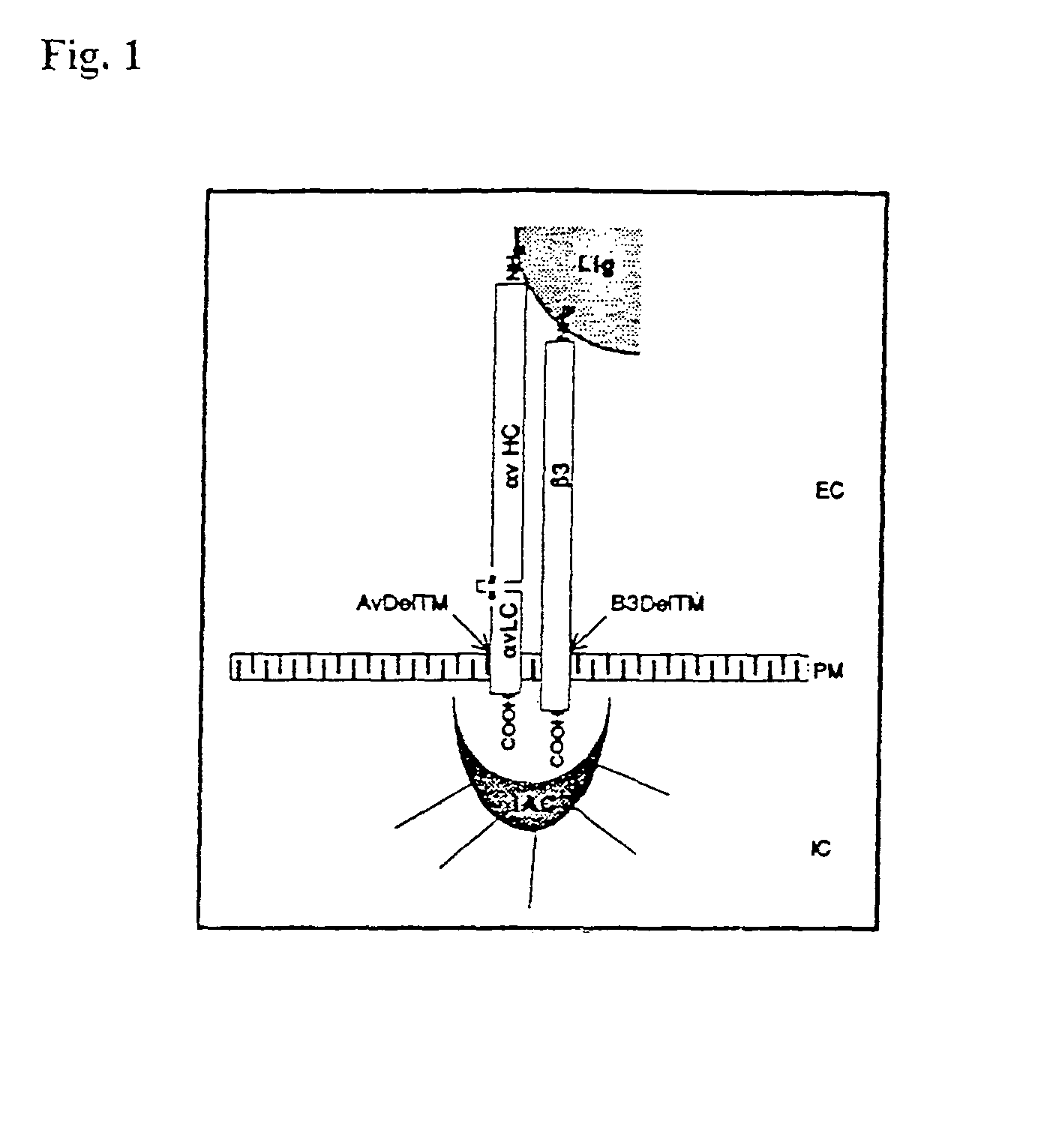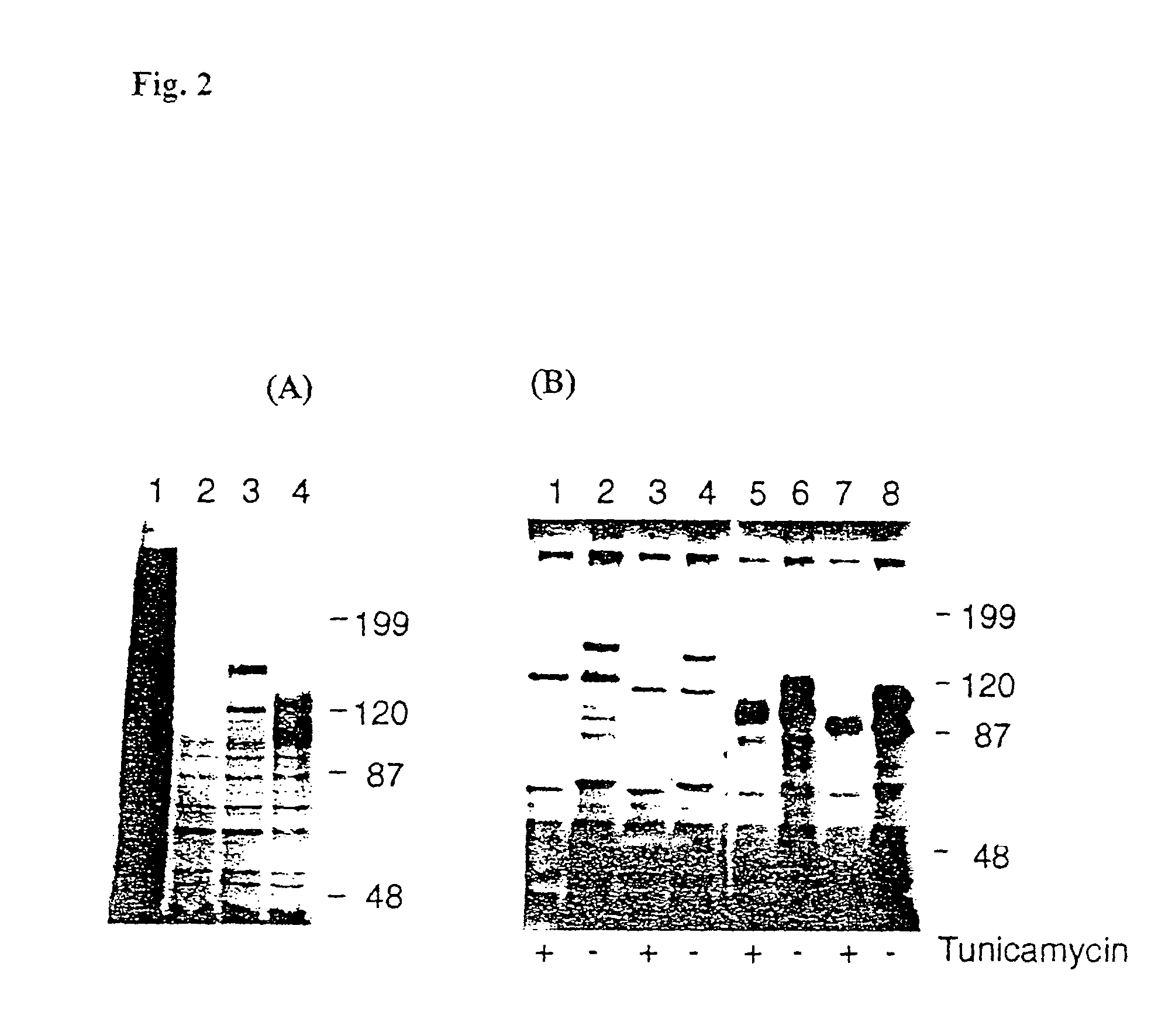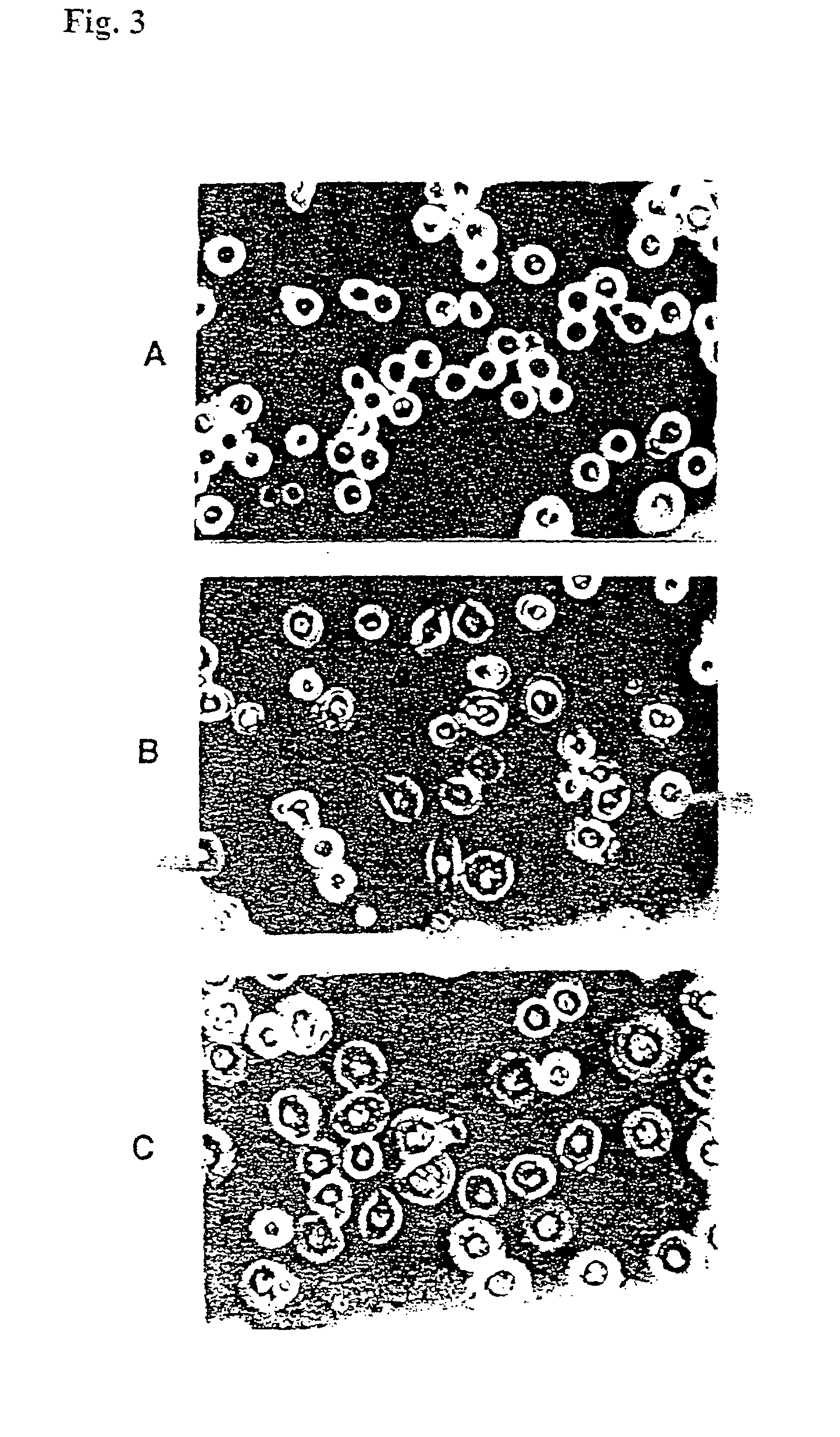Soluble recombinant αvβ3 adhesion receptor
a recombinant, soluble technology, applied in the direction of animal/human proteins, viruses/bacteriophages, peptides, etc., can solve the problems of inability to achieve biochemically satisfactory amounts, cumbersome screening of /sub>3/sub> from placenta, and inability to purify recombinant technology, etc., to achieve high yield, high throughput screening, and high resolution structural analysis
- Summary
- Abstract
- Description
- Claims
- Application Information
AI Technical Summary
Benefits of technology
Problems solved by technology
Method used
Image
Examples
example 1
Construction of Recombinant Transfer Vectors
[0106]αV cDNA was excised as an EcoRI fragment from αVpcDNA-1Neo (Felding-Habermann 1992, J. Clin. Invest. 89, 2018) and cloned into the transfer plasmid pBacPAK8 (Clontech). The resulting recombinant was termed αV (FL)(pBac8). The integrin β3 cDNA was excised as a Xbal fragment from β3pcDNA-1Neo and cloned into the transfer plasmid pBacPAK9 (Clontech). The transmembrane truncated αV and β3 cDNAs were constructed using Polymerase Chain Reaction (PCR) using Pfu Thermostable DNA polymerase (Stratagene). Truncated αV cDNA coding for amino acids 1-987 of mature. (αV (signal sequence included) was generated using oligonucleotide primers:[0107]5′-GAC CAG CAT TTA CAG TGA-3′ (SEQ ID NO: 4) [forward] and[0108]5′CA CAG GTC TAG ACT ATG GCT GAA TGC CCC AGG-3′ (SEQ ID NO: 5) [reverse Primer, containing translation stop codon (bold) after that coding for aa 987 followed by XbaI Restriction site (underlined)].
[0109]The PCR product was digested with SalI ...
example 2
Generation of Recombinant Baculovirus
[0111]BacPAK6 (Clontech) baculovirus genomic DNA was prepared from high titre virus stock (Page and Murphy 1990: Methods in Molecular Biology. Humana Press, Clifton, N.J., USA) and linearized with Bsu36I (Kitts and Possee 1993, Biotechniques 14, 810).
[0112]Recombinant baculovirus clones expressing full length and truncated αV and β3 integrins were prepared according to the Clontech BacPAK product protocol. A null recombinant baculovirus clone was also prepared using pBacPAK9 as transfer plasmid for use as negative control. The correct recombinant viral clones were identified by PCR and the virus was propagated and titered in Sf9 cells (O'Reilly et al. 1992, Baculuvirus expression vectors: a laboratory manual. Oxford University Press, Inc., New York).
example 3
Metabolic Pulse Labelling of Proteins Expressed in Sf9 Cells
[0113]Metabolic labelling of Sf9 cells was performed as described (Summer and Smith 1987: A manual of methods for baculovirus vectors and insect cell procedures. Texas Agricultural Experiment Station Bulletin B-1555). Where indicated, tunicamycin (Sigma) was present at 10 μg / ml for 16 hours before and during pulse labelling. Cells were lysed with 100 μl of buffer [1% Nonidet® P-40, 1 mM CaCl2, 150 mM NaCl, 0.4 mM Pefabloc® (Boehringer Mann-heim), 10 μg / ml Leupeptin and E64 (Sigma), 10 mM Tris / HCl; pH 7.4; Nonidet P-40 is a detergent and Pefabloc is a protease inhibitor]. The lysate was centrifuged at 14000×g in an Eppendorf microfuge at 4° C. for 10 minutes and resolved by electrophoresis in 8% SDS-poly-acrylamide gel under reducing conditions, fixed, and dried before autoradiography (Sambrook et al. 1989 Molecular Cloning: A Laboratory Manual. Cold Spring Harbor Laboratory Press, Cold Sring Harbor, N.Y.).
PUM
| Property | Measurement | Unit |
|---|---|---|
| molecular weights | aaaaa | aaaaa |
| molecular weights | aaaaa | aaaaa |
| pH | aaaaa | aaaaa |
Abstract
Description
Claims
Application Information
 Login to View More
Login to View More - R&D
- Intellectual Property
- Life Sciences
- Materials
- Tech Scout
- Unparalleled Data Quality
- Higher Quality Content
- 60% Fewer Hallucinations
Browse by: Latest US Patents, China's latest patents, Technical Efficacy Thesaurus, Application Domain, Technology Topic, Popular Technical Reports.
© 2025 PatSnap. All rights reserved.Legal|Privacy policy|Modern Slavery Act Transparency Statement|Sitemap|About US| Contact US: help@patsnap.com



